Showing Spotlights 497 - 504 of 2779 in category All (newest first):
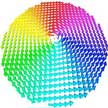 New types of magnetic nanostructures have interesting properties that enhance novel medical applications in diagnosis and allow the exploration of new therapeutic techniques. In a new paper, researchers review promising new nanomaterials that can be used in cancer diagnosis and treatment, namely as magnetic resonance imaging (MRI) contrast agents. One especially interesting advance involves exotic spin configurations, like a vortex state in nanodiscs, where magnetic moments arrange into a curly geometry.
New types of magnetic nanostructures have interesting properties that enhance novel medical applications in diagnosis and allow the exploration of new therapeutic techniques. In a new paper, researchers review promising new nanomaterials that can be used in cancer diagnosis and treatment, namely as magnetic resonance imaging (MRI) contrast agents. One especially interesting advance involves exotic spin configurations, like a vortex state in nanodiscs, where magnetic moments arrange into a curly geometry.
Feb 6th, 2020
 Proteins present in human plasma mirror a person's physiology and the ability to rapidly profile the plasma proteome holds the promise of a revolution in point-of-care disease diagnosis and therapeutic monitoring. New research findings suggest that levitation patterns of human plasma proteins using a magnetic levitation technique may provide useful information about the health spectrum of individual donors. The study reveals that optical images of magnetically levitated plasma proteins carry important information about the health spectrum of plasma donors.
Proteins present in human plasma mirror a person's physiology and the ability to rapidly profile the plasma proteome holds the promise of a revolution in point-of-care disease diagnosis and therapeutic monitoring. New research findings suggest that levitation patterns of human plasma proteins using a magnetic levitation technique may provide useful information about the health spectrum of individual donors. The study reveals that optical images of magnetically levitated plasma proteins carry important information about the health spectrum of plasma donors.
Feb 3rd, 2020
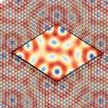 Researchers explain how a higher order periodic modulations due to the encapsulation of graphene between hexagonal boron nitride, called supermoire, affects the electronic and structural properties of graphene, as revealed in three recent independent experiments. High quality graphene samples are of high importance for obtaining and exploiting its theoretically described properties. Utilizing an adequate substrate reduces the corrugation and improves otherwise disorder limited properties of graphene.
Researchers explain how a higher order periodic modulations due to the encapsulation of graphene between hexagonal boron nitride, called supermoire, affects the electronic and structural properties of graphene, as revealed in three recent independent experiments. High quality graphene samples are of high importance for obtaining and exploiting its theoretically described properties. Utilizing an adequate substrate reduces the corrugation and improves otherwise disorder limited properties of graphene.
Jan 29th, 2020
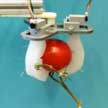 Grippers or end effectors are an essential tool integrated with robotic arms for implementing grasping and manipulating functions in a variety of tasks, ranging from picking up and holding objects, to digging and sorting, to locomotion and scratching. Engineers have developed a new kind of smart soft actuator, based on the triboelectric nanogenerator (TENG), to fabricate intelligent grippers for robotics, aiming at potential applications in the areas of agriculture, engineering and healthcare and beyond.
Grippers or end effectors are an essential tool integrated with robotic arms for implementing grasping and manipulating functions in a variety of tasks, ranging from picking up and holding objects, to digging and sorting, to locomotion and scratching. Engineers have developed a new kind of smart soft actuator, based on the triboelectric nanogenerator (TENG), to fabricate intelligent grippers for robotics, aiming at potential applications in the areas of agriculture, engineering and healthcare and beyond.
Jan 21st, 2020
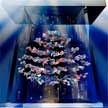 The density of proteins in solution is an important fundamental biophysical quantity that has not been accurately measured yet. This has led to extensive debate in the literature regarding the precise density value of proteins. This rough density metric can often lead to inaccurate estimates on the other physicochemical and composite protein features, especially after their interactions with other materials such as nanoparticles. Researchers have now demonstrated a new technique using superparamagnetic iron oxide nanoparticles for magnetic levitation, which promises a more precisely measurement of the density of proteins in solution.
The density of proteins in solution is an important fundamental biophysical quantity that has not been accurately measured yet. This has led to extensive debate in the literature regarding the precise density value of proteins. This rough density metric can often lead to inaccurate estimates on the other physicochemical and composite protein features, especially after their interactions with other materials such as nanoparticles. Researchers have now demonstrated a new technique using superparamagnetic iron oxide nanoparticles for magnetic levitation, which promises a more precisely measurement of the density of proteins in solution.
Jan 13th, 2020
 Researchers have developed numerous applications with structural colors, among them the creation of sophisticated security features for anti-counterfeiting. Covert polarization displays, for instance, provide a barrier to the inadvertent viewing of encrypted optical information without compromising packaging aesthetics. To break through the flexibility/scalability limitation of existing systems, researchers have now developed a large-area covert polarization display technology by using ultrathin lossy nanocolumns deposited on a metal film. This clever strategy for switching covert optical information uses polarization-dependent multicolors without structurally sophisticated fabrication processes.
Researchers have developed numerous applications with structural colors, among them the creation of sophisticated security features for anti-counterfeiting. Covert polarization displays, for instance, provide a barrier to the inadvertent viewing of encrypted optical information without compromising packaging aesthetics. To break through the flexibility/scalability limitation of existing systems, researchers have now developed a large-area covert polarization display technology by using ultrathin lossy nanocolumns deposited on a metal film. This clever strategy for switching covert optical information uses polarization-dependent multicolors without structurally sophisticated fabrication processes.
Jan 10th, 2020
 The combination of multiple therapeutic modalities with synergetic effects is a promising approach to enhance antibacterial efficiency and possibly decrease the needed concentration of bactericidal reagents. In new work, scientists report a path to achieve efficient localized bacterial eradication and anti-infective therapy by combining the advantages of 2D graphene and metal organic framework (MOF)-derived carbon nanomaterials. This proposed MOF-derived 2D carbon nanosheets (2D-CNs) can form aggregations spontaneously under NIR irradiation and meanwhile exhibit localized triple bactericidal modalities.
The combination of multiple therapeutic modalities with synergetic effects is a promising approach to enhance antibacterial efficiency and possibly decrease the needed concentration of bactericidal reagents. In new work, scientists report a path to achieve efficient localized bacterial eradication and anti-infective therapy by combining the advantages of 2D graphene and metal organic framework (MOF)-derived carbon nanomaterials. This proposed MOF-derived 2D carbon nanosheets (2D-CNs) can form aggregations spontaneously under NIR irradiation and meanwhile exhibit localized triple bactericidal modalities.
Jan 2nd, 2020
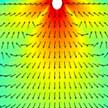 Plasmonic 'nanotweezers' are structures made of noble metals that concentrate and absorb light, resulting in 'plasmonic hotspots' that make it possible to manipulate nanoscale objects suspended in a fluid. Trapping or sensing of nanoparticles using nanotweezers suffers from an intrinsic problem of low throughput as the particle delivery process is often diffusion-limited. Researhers have developed bubble- and convection-assisted trapping techniques that overcome the diffusion-limited trapping in nanoaperture tweezers and enable a reduction of 1-2 orders of magnitude in particle-trapping time compared to that of a diffusion-limited trap.
Plasmonic 'nanotweezers' are structures made of noble metals that concentrate and absorb light, resulting in 'plasmonic hotspots' that make it possible to manipulate nanoscale objects suspended in a fluid. Trapping or sensing of nanoparticles using nanotweezers suffers from an intrinsic problem of low throughput as the particle delivery process is often diffusion-limited. Researhers have developed bubble- and convection-assisted trapping techniques that overcome the diffusion-limited trapping in nanoaperture tweezers and enable a reduction of 1-2 orders of magnitude in particle-trapping time compared to that of a diffusion-limited trap.
Dec 23rd, 2019
 New types of magnetic nanostructures have interesting properties that enhance novel medical applications in diagnosis and allow the exploration of new therapeutic techniques. In a new paper, researchers review promising new nanomaterials that can be used in cancer diagnosis and treatment, namely as magnetic resonance imaging (MRI) contrast agents. One especially interesting advance involves exotic spin configurations, like a vortex state in nanodiscs, where magnetic moments arrange into a curly geometry.
New types of magnetic nanostructures have interesting properties that enhance novel medical applications in diagnosis and allow the exploration of new therapeutic techniques. In a new paper, researchers review promising new nanomaterials that can be used in cancer diagnosis and treatment, namely as magnetic resonance imaging (MRI) contrast agents. One especially interesting advance involves exotic spin configurations, like a vortex state in nanodiscs, where magnetic moments arrange into a curly geometry. 
 Subscribe to our Nanotechnology Spotlight feed
Subscribe to our Nanotechnology Spotlight feed





